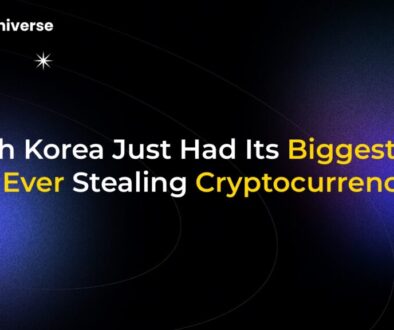Ethereum Whales and the Supply Squeeze Shaking Up Crypto Markets

The Perfect Storm: Whales, Staking, and an Unprecedented Ethereum Supply Squeeze
Something significant is brewing beneath the surface of the cryptocurrency market. It’s not just the daily price fluctuations; it’s a fundamental shift in supply and demand, driven by some of the biggest players in the game. We’re talking about an Ethereum supply squeeze, a phenomenon where the amount of available ETH on exchanges is plummeting, potentially setting the stage for a major price movement. At the heart of this trend are Ethereum whales—large-scale investors whose strategic moves are draining liquidity and rewriting the rules for everyone else.
Recent data shows that the amount of Ethereum held on exchanges has dropped to multi-year lows, with figures hovering around 18.8 million ETH. This isn’t retail investors panic-selling; it’s a calculated accumulation by smart money. Institutions, corporate treasuries, and massive individual holders are systematically moving ETH off exchanges and into long-term storage or staking contracts. When the available supply of an asset this popular vanishes, one thing tends to follow: a dramatic price reaction.
Who Are the Whales and Why Are They Buying?
In the crypto ocean, “whales” are entities that hold a vast amount of a particular cryptocurrency. Their buying and selling power is so immense that they can influence market trends. Currently, these behemoths are in a clear accumulation phase, with some reports indicating that the largest holders control nearly 30 million ETH.
This isn’t just hoarding; it’s a strategic pivot. We’ve witnessed a massive capital rotation, with billions of dollars flowing from assets like Bitcoin directly into Ethereum. This suggests a growing institutional confidence in Ethereum’s long-term potential, driven by several key factors:
- The Rise of Staking: The shift to a Proof-of-Stake consensus mechanism (The Merge) has turned ETH into a productive, yield-bearing asset. Whales can lock up their holdings to help secure the network and earn rewards, effectively removing that supply from the market for extended periods.
- Institutional Appetite: The approval of spot Ethereum ETFs has opened the floodgates for traditional finance to gain exposure. These funds are buying up billions of dollars worth of ETH, further constricting the available supply.
- The Tokenization Revolution: Ethereum is the undisputed leader in asset tokenization, with the market cap of tokenized assets on its network soaring past $300 billion. This creates sustained, fundamental demand for ETH as the base layer for a new digital economy.
How Staking is Tightening the Vise on ETH Supply
ETH staking is more than just a feature; it’s a core driver of the current Ethereum Whales and the
This dynamic creates a powerful feedback loop:
- Reduced Sell Pressure: With less ETH on exchanges, there are fewer sellers available to meet buying demand.
- Increased Scarcity: As more ETH is staked and moved into cold storage, the asset becomes scarcer, which can drive up its value.
- Price Stability and Growth: A smaller, more constrained supply can lead to less volatility during downturns and more explosive momentum during bull runs.
The Ripple Effect: Short Squeezes and Market Volatility
The aggressive accumulation by whales doesn’t come without consequences. As the price of Ethereum climbs due to the supply shock, traders who bet against it (short-sellers) are forced to buy back their positions to cover their losses. This creates a “short squeeze,” adding even more buying pressure and fueling a rapid price increase.
Recently, we saw over $11 million in short positions liquidated as Ethereum’s price surged. This explosive momentum demonstrates the power of the supply squeeze and serves as a stark warning to bearish traders. For investors, it highlights the importance of monitoring not just price charts but also on-chain data showing whale movements and exchange balances.
Challenges and Opportunities for the Web3 Ecosystem
While a rising ETH price is exciting for investors, the shifting landscape presents a mixed bag for Web3 startups and DAOs (Decentralized Autonomous Organizations).
The Opportunities:
- Increased DeFi Participation: A bullish Ethereum market often leads to a surge in capital flowing into the decentralized finance (DeFi) ecosystem, creating new opportunities for innovation.
- Innovative Treasury Management: The rise of staking encourages Web3 projects to adopt more sophisticated treasury strategies, using their ETH holdings to generate yield and fund development.
The Challenges:
- Liquidity Constraints: The concentration of wealth among a few large whales can raise concerns about market manipulation and create liquidity challenges, especially for projects needing to convert crypto to fiat for operational expenses.
- Navigating Regulations: The evolving regulatory landscape around staking and digital assets requires startups to remain agile and compliant to avoid potential pitfalls.
Are You Positioned for What’s Coming?
The evidence is compelling: Ethereum’s supply is being systematically drained from the open market by its largest and most sophisticated players. The combination of massive whale accumulation, institutional buying via ETFs, and the ever-growing amount of ETH locked in staking contracts is creating a perfect storm for a supply shock.
While no outcome is guaranteed in the volatile world of crypto, the writing is on the wall. The dynamics suggest that the market may be on the cusp of a groundbreaking phase that could redefine Ethereum’s valuation. As the available supply continues to vanish, the question for every investor is simple: are you ready for the rally that follows?


